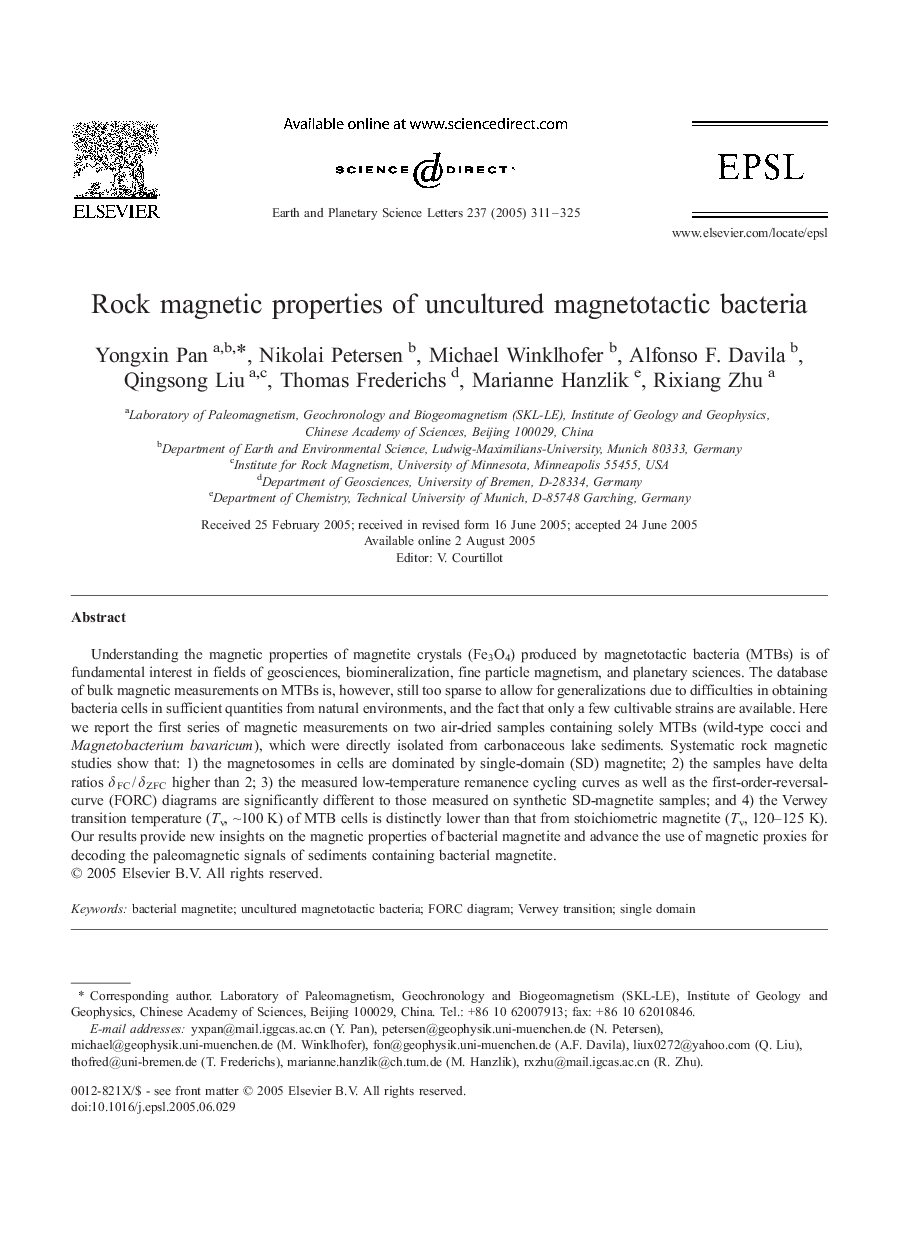| Article ID | Journal | Published Year | Pages | File Type |
|---|---|---|---|---|
| 9522038 | Earth and Planetary Science Letters | 2005 | 15 Pages |
Abstract
Understanding the magnetic properties of magnetite crystals (Fe3O4) produced by magnetotactic bacteria (MTBs) is of fundamental interest in fields of geosciences, biomineralization, fine particle magnetism, and planetary sciences. The database of bulk magnetic measurements on MTBs is, however, still too sparse to allow for generalizations due to difficulties in obtaining bacteria cells in sufficient quantities from natural environments, and the fact that only a few cultivable strains are available. Here we report the first series of magnetic measurements on two air-dried samples containing solely MTBs (wild-type cocci and Magnetobacterium bavaricum), which were directly isolated from carbonaceous lake sediments. Systematic rock magnetic studies show that: 1) the magnetosomes in cells are dominated by single-domain (SD) magnetite; 2) the samples have delta ratios δFC / δZFC higher than 2; 3) the measured low-temperature remanence cycling curves as well as the first-order-reversal-curve (FORC) diagrams are significantly different to those measured on synthetic SD-magnetite samples; and 4) the Verwey transition temperature (Tv, â¼100 K) of MTB cells is distinctly lower than that from stoichiometric magnetite (Tv, 120-125 K). Our results provide new insights on the magnetic properties of bacterial magnetite and advance the use of magnetic proxies for decoding the paleomagnetic signals of sediments containing bacterial magnetite.
Related Topics
Physical Sciences and Engineering
Earth and Planetary Sciences
Earth and Planetary Sciences (General)
Authors
Yongxin Pan, Nikolai Petersen, Michael Winklhofer, Alfonso F. Davila, Qingsong Liu, Thomas Frederichs, Marianne Hanzlik, Rixiang Zhu,
